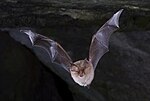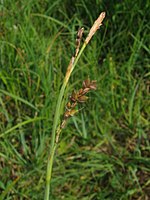Welshbury Hill
Gloucestershire geography stubsHill forts in Gloucestershire

Welshbury Hill is an Iron Age hill fort near Mitcheldean in Gloucestershire, England. It is thought to have been built by Celts and dates back to 1600 BC.Welshbury Hill Fort is reputed to be the place where the Celtic Dobunni tribe staged its last battle against the Romans after a long-running guerrilla war.There is an ancient spring water well nearby known locally as St Anthony's Well.
Excerpt from the Wikipedia article Welshbury Hill (License: CC BY-SA 3.0, Authors, Images).Welshbury Hill
George Lane, Forest of Dean Littledean
Geographical coordinates (GPS) Address External links Nearby Places Show on map
Geographical coordinates (GPS)
| Latitude | Longitude |
|---|---|
| N 51.837 ° | E -2.47 ° |
Address
Welshbury Hill Fort
George Lane
GL14 3JL Forest of Dean, Littledean
England, United Kingdom
Open on Google Maps







